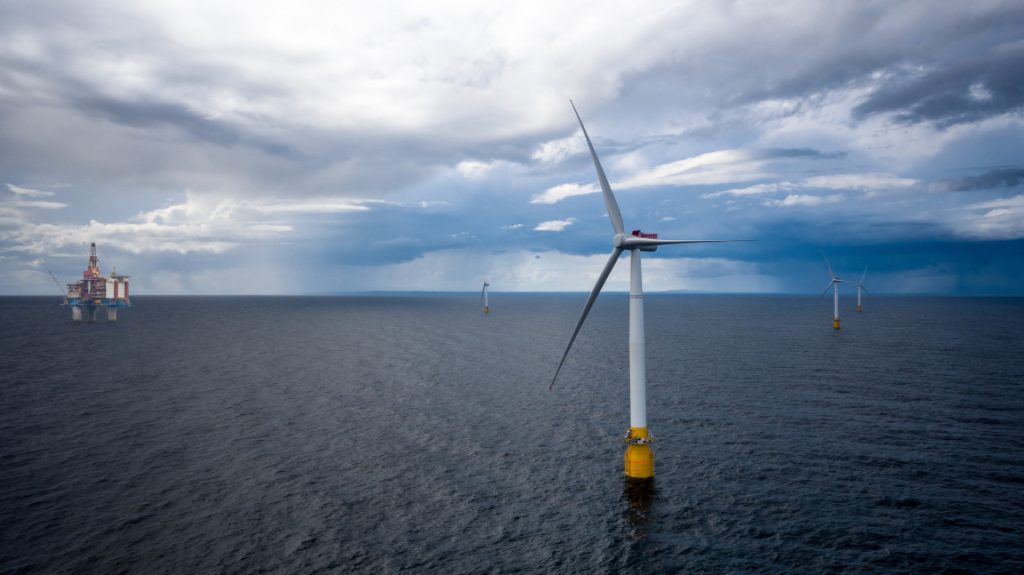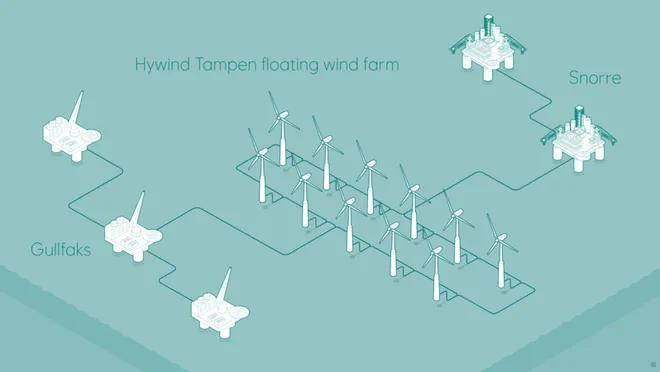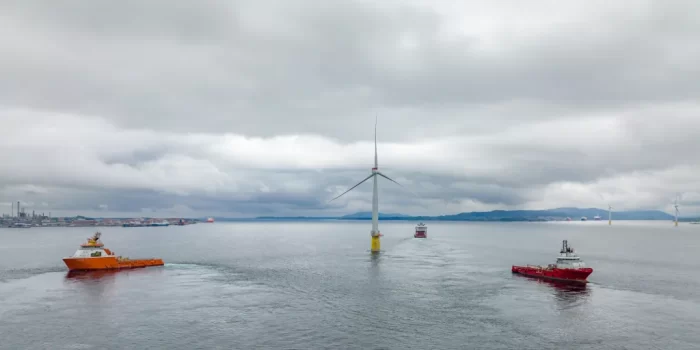A facility described as the world’s largest floating wind farm produced its first power over the weekend, with more turbines set to come online before the year is out. In a statement Monday, Norwegian energy firm Equinor, better known for its work in the oil and gas industry, said power production from Hywind Tampen’s first wind turbine took place on Sunday afternoon.
While wind is a renewable energy source, Hywind Tampen will be used to help power operations at oil and gas fields in the North Sea. Equinor said Hywind Tampen’s first power was sent to the Gullfaks oil and gas field.

“I am proud that we have now started production at Hywind Tampen, Norway’s first and the world’s largest floating wind farm,” Geir Tungesvik, Equinor’s executive vice president for projects, drilling, and procurement, said. “This is a unique project, the first wind farm in the world to power oil and gas installations.”
The wind farm sits about 87 miles off the coast of Norway and plans to fully come online between 2022 and 2023. So far, only seven of its eleven turbines are slated to come online in 2022. Even so, Equinor has stated that Hywind Tampen “will be the world’s largest floating wind farm with a capacity of 60 MW” in the meantime.

Unlike bottom-fixed structures, floating wind farms attach turbines to floating structures held in place by mooring lines and anchors. Many models borrow from offshore drilling rig designs and use motion controllers to optimize power production while reducing structural stress. Hywind Tampen’s turbines, in particular, are installed on floating concrete structures with joint mooring systems. Their stability is provided by gravity. Another design uses semi-submersible floaters that rely on buoyancy instead.
These structures enable wind farms to be built in deeper waters, thereby expanding the energy-producing area. Floating wind farms boast additional benefits like capturing stronger, more consistent winds found offshore, providing better accommodation for shipping and fishing lanes, and reducing visual pollution.


